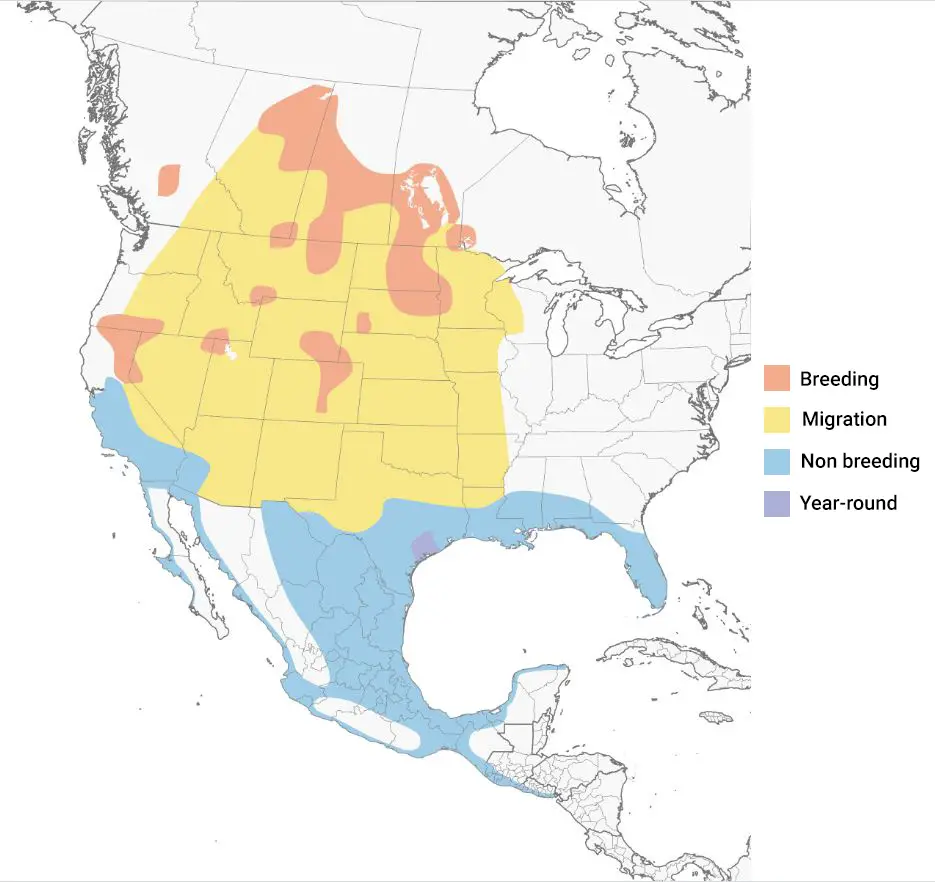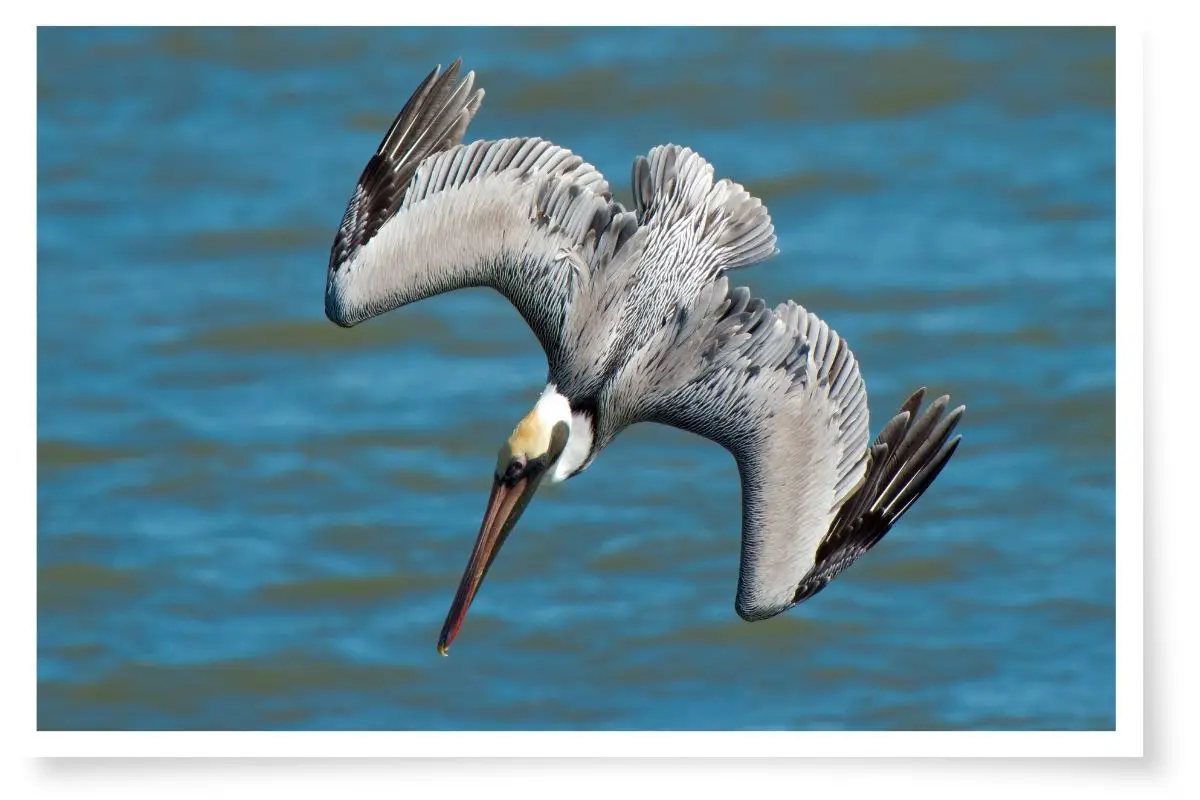Pelicans are perhaps one of the planet’s most recognizable and well-known bird species. Their huge bills and dangling gular pouches are unmistakable. In this article, thanks to information gathered from The Cornell Lab of Ornithology and other sources, you will discover where pelicans live all across the globe.
Pelicans live on six of the seven continents, on or near water. They prefer shallow waters such as fresh or saltwater lakes, rivers, marshes, wetlands, inland seas, deltas, brackish lagoons, estuaries, alkaline mudflats, reservoirs, seasonal ponds, and coastal marine environments. Some are migratory.
The rest of this article will explore where pelicans live in more detail. You will learn about each of the 8 species of pelicans and the habitats they prefer. Let’s dive in…

As an Amazon Associate, I earn from qualifying purchases. Birdwatch World earns commissions from Amazon and similar affiliate programs from any purchases made via links in this article.
Where Do Australian Pelicans Live?
Australian Pelicans can be found in most inland and coastal areas of Australia. They also frequent New Guinea, the Solomon Islands, and New Zealand. They have also been seen in Indonesia.
They have been recorded as far north as South Cotabato in the Philippines and as far south as Timaru in New Zealand.

Australian pelicans prefer large stretches of open water without too much vegetation. They typically inhabit large lakes, reservoirs, billabongs, and rivers. Other habitats they will occupy are swamps, estuaries, drainage channels in farmlands, saltpans, coastal lagoons, fishing ports, and temporarily flooded areas in dry zones.
Find out how long pelicans live and other amazing facts in this article here on my blog.

These large-feathered Australians are nomadic. They will often move great distances for food or based on seasonal factors such as drought. Like most pelicans, Australian pelicans are large birds (around 152–188 cm with a wingspan of 230–260 cm) and rely on thermal updrafts to carry them upwards into the air. Because of this, they can often be blown off course by winds.

When it comes to nesting, Australian pelicans require remote, undisturbed sites with a good food supply. They nest on small sandy islands or the shoreline of coastal areas, lakes, and swamps.
When roosting or lazing about, Australian pelicans prefer shorelines, beaches, mudflats, sandbars, reefs, jetties, and even light poles.

A lot of the information in this article has been sourced from The Handbook Of The Birds Of The World Vol. 1 by Andrew Elliot (Author), Josep del Hoyo (Editor), Jordi Sargatal (Editor), and Christoph Imboden (Foreword).
The Handbook Of The Birds Of The World is a 16-volume series that covers every known living bird species. It is where the Cornell Lab of Ornithology draws its information for its birdsoftheworld.org website and is a trusted reference for bird information worldwide.
Where Do Pelicans Live In America?
America is home to two species of pelicans: the American White and the Brown.

The American white is found from the Yukon and Northwest Territories in Canada, all the way south to Panama in Central America. The brown pelican inhabits western coastal areas from Ketchikan in Alaska, all the way south to Coquimbo, Chile; and from the St. Lawrence River, Quebec, south to Cayenne in French Guiana in the east.
American White Pelican
These pelicans except for resident colonies in Texas and Mexico are a migratory species. This means that they make use of various habitats in their breeding, non-breeding, and wintering ranges.

During breeding season and migration, American white pelicans frequent freshwater lakes, inland marshes, and rivers. Like most pelicans, they prefer shallow water. When nesting, they commonly choose islands that are over 50 km (31 mi) from where they forage.
One common place that American white pelicans choose for breeding and nesting is Gunnison Island in the Great Salt Lake, Utah. Around 10-20% of the population uses this island as a breeding ground.
They rarely spend winters in inland habitats, instead favoring shallow coastal bays, inlets, and estuaries. If they do venture inland for winter, they will choose areas below dams or on large rivers where the flow of water prevents the surface from freezing.

Brown Pelican
Brown pelicans are primarily a coastal species, making them one of only two truly marine pelicans.

They prefer warm marine and estuarine environments and are rarely found inland. Some will visit inland waters in southwestern U.S. and central Florida after breeding.
When breeding, brown pelicans will choose small islands that are within 30-50 km of a food supply. In Florida, they breed predominantly on mangrove islets; in the Gulf of California, they breed on dry, rocky offshore islands.
Brown pelicans are plunge divers. They will climb to around 10-20 m (32.8-65.6 ft) above the water’s surface before diving into the water to catch fish. Due to the layer of air sacks beneath their skin, they cannot stay submerged. They are also unable to remain on water for longer than an hour without becoming waterlogged.
Discover more American birds in this article here on the site.

When they’re resting, brown pelicans will favor sandbars, pilings, jetties, offshore rocks and islands, breakwaters, and mangrove islets.
Where Do South American Pelicans Live?
The Peruvian pelican joins the Brown as the other truly marine species. These birds are found on the western coast of South America, from Same in northern Ecuador to Puerto Natales in southern Chile. They are the only predominantly South American pelican species.

Peruvian pelicans prefer shallow inshore waters, including estuaries and bays. Though often seen around fishing ports, they avoid the open sea.
For breeding, these pelicans like small, flat, bare islands or arid coastlines. They will choose remote locations so they are not disturbed by predators or humans.

The South American birds in this article will blow your mind!
Where Do Pelicans Live In Africa?
Two species of pelican can be found on the African continent: the Great White and the Pink-backed. They are both predominantly inland species.
Great White Pelican
Alkaline and freshwater lakes, and sometimes marine environments are where great white pelicans make their homes in Africa. They are found south of the Saraha Desert down to Capetown.
They can also be found in Eurasia where they frequent fresh or brackish lakes, lagoons, and marshes. They have been recorded as far north as Alnwick in the United Kingdom, and as far south as Aden in Yemen.

Great white pelicans breed in southeast Europe, north and southeast Kazakhstan, Africa, and northwest India. Their northern populations are migratory. It is not known exactly where the European population’s wintering grounds are but it is thought to be in Africa. Asian birds spend their winters in Pakistan.

Pink-backed Pelican
Pink-backed pelicans are found in subtropical and tropical Africa; from Mauritania east to Port Sudan, Sudan; and Port Said, Egypt, south to Cape Town, South Africa. They also occur in southwest Arabia.

They are not fussy about the habitats they live in; freshwater lakes, swamps, rivers, seasonal ponds, bays, and alkaline lakes are all preferred. Interestingly, these birds can also be found in the dry country when locusts are plentiful.
They breed in trees that are near water, on sandy islands, in mangroves, and even near civilization. They roost on cliffs, coral reefs, dunes, piers, and walls close to an abundant food source.

In recent years pink-backed pelicans have been sighted in Europe, as far north as Dolnaslaskie Province, Poland.
Where Do Pelicans Live In Eurasia?
The last two of the world’s pelican species inhabit countries within Eurasia. They are the Spot-billed Pelican and the flamboyant Dalmatian Pelican.
Spot-billed Pelican
These birds live in southern Asia, with recorded sightings from India, Sri Lanka, Thailand, Cambodia, Vietnam, Bhutan, Nepal, Myanmar, Malaysia, and China.

Spot-billed pelicans like marshes, rivers, estuaries, reservoirs, tanks, flooded fields, large lakes, brackish lagoons, tidal creeks, coastal waters, and jheels.
These pelicans nest in large trees, normally in swamp forests or swampy savannas, sometimes alongside paddy fields. They also like to roost in trees and seem to have a preference for bare or dead ones.

Dalmatian Pelican
These stylish-looking pelicans are the largest of all pelicans and can be found across southeast Europe and eastern Asia. Their largest populations are in Greece and northwestern India. They also frequent Romania, Ukraine, Turkey, Moldova, Istanbul, Georgia, Armenia, Azerbaijan, Kazakhstan, Uzbekistan, Mongolia, eastern China, and Taiwan.

Dalmatian pelicans have also been reported as far west as A Coruña in Spain and Norway and Russia in the north.
These birds prefer rivers, lakes, deltas, and estuaries. They nest on islands or amongst dense vegetation. When wintering in India, they prefer jheels and lagoons. Ice-free lakes are their habitat of choice when wintering in Europe.

Conclusion
That covers all 8 species of pelicans, where they are found, and the habitats they live in.
Three of the eight species of pelican in this post are listed as Near Threatened on the IUCN Red List Of Threatened Species. The sobering statistic is that 48% of bird populations are decreasing. Many other birds, animals, and plants on our planet are also threatened with extinction.
You can help threatened species by donating to organizations such as the IUCN. Click here to support the IUCN’s tireless work gathering the information we need to save these species.
To learn more about pelicans, read the Birdwatch World articles below:
- Pelicans Species Of The World – Did you know there are 8 of them?
- How Long Do Pelicans Live? – and other amazing pelican facts.
- Fish-eating Birds – 10 Australian birds that love that sushi
References
- Birds Of The World – The Cornell Lab Of Ornithology
- The Handbook Of The Birds Of The World Vol. 1 – A. Elliot, J. del Hoyo, J. Sargatal, C. Imboden
- eBird – The Cornell Lab Of Ornithology

